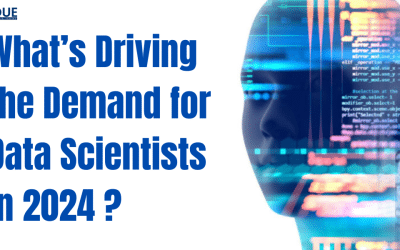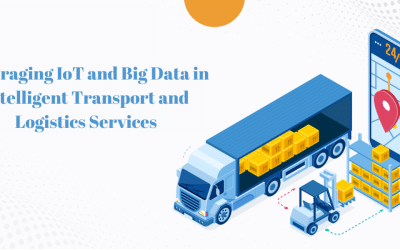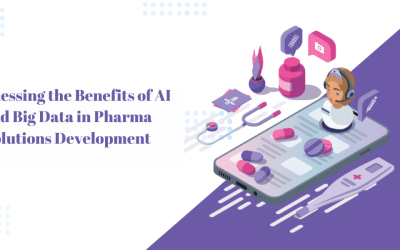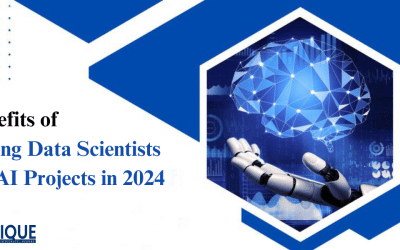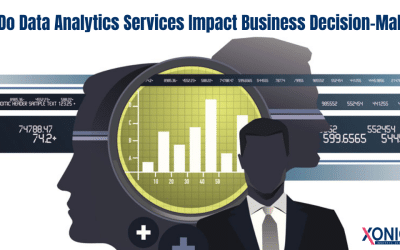Large quantities of top-quality data are required to create AI models that replicate human behavior closely and make decisions or perform similar actions. Preparing high-quality information for the training of AI models calls for the correct and exact annotation. Annotation of data is a method that is used to classify and label information for AI modeling training. Proper data annotation tools ensures that AI applications attain the required performance, precision, and efficiency in tackling specific tasks or issues.
Annotated data, for instance, allows computer vision models to detect and categorize images with accuracy, resulting in better visual search results. Chatbots created based on accurate annotated data can also discern user intentions and provide the most natural and intuitive interaction.
Data Annotation Company also help improve speech recognition software, allowing more accurate voice transcription and making interfaces based on speech easier to use. Search algorithms can better comprehend the context of a query by annotating data. This results in higher-quality results. This method is crucial for the development of recommendation systems. This requires training the AI model to identify consumers’ behavior patterns and preferences to provide personalized recommendations to every person.
Annotating data is essential to allow AI tools to achieve their goals, resulting in the need for human annotators and annotation tools. By tapping into AI’s power, Researchers aim to get to the level of dynamic communication tools and leave static chatbots in the dust.
Adaptability is based on high-quality information annotation, essential in creating accurate, efficient, and impartial AI models. Data annotation, which is often an overlooked key to the success of AI, is crucial to achieving the highest level of excellence. It is essential in developing conversations with intelligent AI and facilitating chatbots to respond to human speech quickly and naturally.
In this blog post, we will reveal the fascinating details of data annotation and present the most effective tools to add data annotations to you to use in your AI project.
What Exactly Is Data Annotation?
Data annotation involves using tags or labels on an AI training dataset to add context and meaning to the dataset. Audio, text, images, and video files are noted before being fed to the AI model. The annotations help machines detect patterns as well as make predictions. Gain insights using data that has been labeled. The quality and precision of annotations on data are essential to the reliability and performance of machine learning models.
In making the AI model, it’s vital to feed data to an algorithm to analyze it and its outputs. However, for the model to comprehend the data it is fed, it is essential to add annotations to the data. Data annotation is the process of precisely labeling specific areas of the data the AI model analyzes. With annotations, models can better process data, gain comprehension, and conclude using their knowledge. Data annotation enables AI models to comprehend and use data effectively and improve their efficiency and decision-making ability.
Data annotation plays an essential part in supervised machine learning – a type of machine learning that employs labels as the training medium – by helping train its model on predictions or classifications made with its data sources. Through such training methods, models learn to predict or make classifications from r input data sources; with more instances and better annotated and accurate input data sets given as training material, more sophisticated learning algorithms may emerge that learn independently or require less explicit guidance for prediction generation. Notes can help increase efficiency while decreasing explicit guidance requirements from humans over time.
Virtual personal assistants like Siri or Alexa rely on data annotation to detect and comprehend commands sent to them by natural spoken language. Data annotation helps machine learning models to understand the intention of a person’s voice or text and provide more specific responses and actions. For instance, if a user asks an assistant virtual to “set a reminder for a doctor’s appointment on Tuesday,” data annotation allows the machine learning model to accurately determine the date along with the date, time, and purpose of setting the appointment successfully. The virtual assistant can miss important information or what the user is trying to convey if data annotation isn’t done correctly, which could lead to errors and inconvenience to the user.
Annotating data may take different formats based on the data’s nature and the reason being served. Image recognition might involve drawing borders around objects of interest and assigning labels to appropriate categories of objects. Data annotations are a part of Natural Language Processing (NLP) and could involve assigning names to objects, sentiment scores, or even part-of-speech tags on text information. Speech recognition data annotation can involve translating spoken words into text.
Benefits Of Using Data Annotation For AI Models
Data annotation tools allow us to gain a deeper understanding of the purpose of objects and aid in making algorithms work better. Data Annotation Services have many benefits for AI/ML models.
Smooth End-User Experience
The annotation of data offers the users of AI platforms a smooth experience. An intelligent product can proficiently resolve users’ questions and concerns by providing relevant assistance. Annotation allows you to be appropriate.
Better Precision Of AI/ML Models
A computer vision model works at multiple levels of accuracy on images in which specific objects are accurately labeled when compared with an image with poorly labeled objects. Therefore, better annotation results in greater precision for the model.
Simple Creation Of Datasets With Labels
Data annotation can speed up the process of preprocessing, which is an essential stage in the ML creation of datasets. Datasets with labels are crucial to ML models since they have to recognize the patterns in input to process them better and provide precise outcomes. Data annotation solutions can result in the development of massive datasets with labels over which AI/ML models operate successfully. A clean, labeled dataset is essential to ensure the security of AI & ML implementations.
The Ability To Scale Up The Implementation
Data annotation reflects the intentions, actions, and feelings of various requests. By using annotation data, precise training data sets are generated. The data sets provide data scientists and AI engineers with the capacity to increase the scale of mathematical models used in diverse datasets of any size.
Top Best Data Annotation Tools
A tool to add data annotations is a program that annotates machine learning training data. The tools are cloud-based, hosted on-premises or in containers, and can be accessed as open-source offerings or commercial services to lease or purchase. These tools mark specific data types, such as images, videos, and audio. They can also be used to record text and sensor data. A few of the most commonly used tools for annotation of data include:
Labelbox
Labelbox is a data-labeling platform with advanced capabilities, including AI-assisted labels, data labeling integration, and QA/QC tools. Different tools for labeling, such as bounding boxes, polygons, and lines, complement the user-friendly interface. Labelbox permits users to label their data quickly and easily. It also gives robust analytics on the performance of labelers as well as high-end quality control to guarantee high-quality results when labeling.
Superpixel coloring in Labelbox for semantic segmentation dramatically increases the accuracy of tasks for labeling images. It also comes with affordable plans for enterprises and SOC2 certification, making it a solid choice for large-scale projects in data annotation. The Python SDK allows users to incorporate Labelbox into their existing machine-learning workflows, making it a robust and flexible software. It is a fantastic option for companies and organizations requiring a robust data labeling system.
Computer Vision Annotation Tool (CVAT)
CVAT is a web-based open-source tool for noting videos and pictures. It has an easy-to-use interface to label objects like bounding boxes, polygons, and critical points to detect and track objects. With CVAT, it is possible to complete semantic segmentation and image classification and enjoy advanced functions, including merging, review, and quality assurance tools to ensure accurate and consistent outcomes.
The platform also provides customization, allowing users to adapt the software for their annotation requirements. CVAT is accessible as an open-source tool that uses community-driven development. CVAT is an excellent alternative for developers and researchers who require a custom and open-source solution for their video and image annotation needs.
Diffgram
Diffgram is a management and labeling platform designed to make managing and annotating massive datasets for machine learning-related tasks easier. It can use different annotation methods, like polygons, bounding boxes, lines, and segmentation masks. It also comes with tools to track the changes and revisions as they occur throughout the course. Its user-friendly and easy-to-use web-based interface provides team collaboration capabilities, automation tools, and integration with various machine-learning tools.
Diffgram is distinguished by its live annotation feature, which allows several users to comment on the same database simultaneously in real-time. This can be useful in collaboration projects and speeds up the annotation process of massive data sets. Diffgram has sophisticated data management features like version control, data backup, and sharing. This feature ensures accurate and consistent annotations and streamlines the machine-learning workflow of businesses and other organizations.
Prodigy
Prodigy is an annotation software designed to make labeling easier and faster in machine-learning tasks. The user-friendly interface allows users to effortlessly mark up texts, images, and audio files. The advanced labeling features comprise entity recognition, text classification, and image segmentation. It can also be used to create personalized workflows to annotate.
One of the main advantages Prodigy has is its active learning capabilities. Prodigy is its active-learning feature, which enables users to develop machine-learning models faster by choosing just the most valuable instances for annotation. This helps save time and lowers costs while increasing the accuracy of models. Prodigy has different collaboration options that suit massive data sets projects. Prodigy is compatible with well-known machine learning libraries and frameworks like PyTorch, creating an ideal alternative to your existing workflows. In the end, Prodigy is a powerful and flexible annotation tool that provides advanced features, active learning capabilities, and easy integration with workflows already in place.
Brat
Brat is an open-source software that allows you to annotate text to perform natural language processing tasks. The user-friendly interface of Brat lets users annotate various objects, relationships, and time-based expressions. Brat offers advanced functions such as annotation propagation, custom types of entities and relations, and cross-document annotation.
Brat can also support collaboration in annotation, allowing for efficient management of large annotation datasets. What makes Brat out is its flexibility in allowing users to create a customized annotation schema and design unique interfaces for annotation. Brat also offers an API that enables programming access to annotations, making integrating with workflows that use other tools simple. Brat is a potent and versatile annotation tool loved by developers and researchers working on natural language processing-related projects. The open-source nature of the tool and API accessibility make it an excellent option for those looking for an efficient solution to annotation using text.
SuperAnnotate
SuperAnnotate is a program designed to identify or mark the various types of information so that computers can comprehend it better. This high-quality annotation software can work on a wide range of information, such as videos, images, texts, audio files, etc. It allows people to label the data more quickly without compromising precision and will enable users to work with other users to enhance the quality of their annotations. The software also has automation capabilities that make labeling easier.
V7
V7 is a robust tool that assists businesses with data annotation to support Artificial Intelligence (AI). It is designed to help make labeling data more efficient and accurate in various AI applications. V7 lets users identify data to AI models at a quicker pace. It’s about ten times faster than conventional techniques. The speed applies to the tasks that are related to computer vision as well as the use of generative AI.
Many successful users in fields like Abyss Solutions, Imidex, and Genmab have expressed appreciation for V7 for its stability, customizable workflows, and easy-to-use interface. V7 includes a feature called AutoAnnotate, which improves the speed of annotation and accuracy. It allows the quick creation of polygonal masks (like outlines) for pictures while maintaining the highest quality.
Important Data Annotation Tool Features
We’ll now look at the most critical aspects the Data Annotation Tools must include for a successful AI project.
Management Of The Dataset
Annotation starts and ends by providing a complete method for controlling the information you intend to label. It is a crucial element of your workflow, and you must ensure that the software you’re contemplating will integrate and work with the vast quantity of files and data types you want to categorize. This is a requirement for searching, filtering, sorting, cloning, and merging data.
The different tools can store the annotation output using other methods. Therefore, ensuring that your software meets your team’s output requirements is essential. Also, the annotations should be saved in a location. The majority of tools allow local or internet-connected storage. However, cloud storage is only sometimes reliable, particularly with your cloud service provider. So, make sure you are aware of support file storage goals.
Methods For Annotation
This is the most essential characteristic of tools for data annotation. They use methods and features that allow you to add labels to your data. However, not all tools are made equal. Some tools are designed to target specific kinds of labels, whereas others have a variety of software that can be used for various applications.
Most offer some form of document classification or data that will help you recognize and categorize your information. Based on your present and plans, it is possible to concentrate on experts or choose an overall platform. An annotation tool is one of the most popular types. Features offered by data annotation tools are the ability to create and manage ontologies and guidelines like labels and classes, attributes, and particular types of annotation.
Data Quality Control
Your machine learning or AI models only depend on the quality of your data. Tools for data annotation can assist in managing your quality assurance (QC) and the verification processes. Ideally, the software will integrate QC into the annotation process itself.
In particular, instant feedback and triggering the tracking of issues during annotation are crucial. Furthermore, workflow procedures like labeling consensus can be supported. Numerous tools provide the ability to have a high-quality dashboard that helps managers monitor and analyze the quality of their products and makes it easier to assign QC assignments back to the team that handles annotations or a dedicated QC team.
Management Of The Workforce
All data annotation tools are designed to be utilized by human workers, even the ones that could use AI to automate. As mentioned earlier, humans are still required to manage exceptions and quality control. Therefore, the most effective solutions will manage workforce features, including task assignment and productivity analysis, and track the time needed for any task or subtask.
Your workforce labeling provider for data might bring in their technologies to study data related to quality work. They could use technologies, including webcams and images, timers for inactivity, and clickstream information to determine how they can assist workers by providing quality data annotation.
Ultimately, your staff should be able to cooperate with and master the tools you intend to utilize. Furthermore, the company providing your workforce must be able to track employee performance, precision, and quality of work. This is even more important when they give you direct insight, for instance, an overview of the dashboard into the efficiency of your outsourcing workers and the quality of their work.
Security
When annotating protected sensitive personal details (PPI) and your personal intellectual property (IP), it is essential to ensure your information is secure. Annotation tools should restrict an annotation’s access to information that is not hers and prevent data downloads. The deployment method is used either via the cloud or even on-premise. The tool could provide secure access to files (e.g., VPN). Many software tools note the annotation’s details, including dates and time, in case of use scenarios that fall within regulatory compliance requirements.
Services For Integrated Labeling
In the past, every tool needed a human workforce to add annotations to data. Both technology and human elements of annotation on data are equally significant. Therefore, many companies that offer data annotation tools provide workers’ networks to offer annotation services. The service provider recruits workers or grants them access through collaboration with other workforce companies.
This feature is excellent for a more accessible experience; every workforce’s skill and capabilities should be evaluated independent of the capability of the tool as a tool. All data annotation tools must allow you to work with the vendor’s workforce or any workforce you choose, like a set of employees or a highly skilled and professionally managed group of people who can be used for data annotation.
Annotation Of Data Is Only Going To Become More Vital With The Advancement Of Ai
Data annotation is essential in creating sophisticated AI bots and systems that seamlessly interact with users. Understanding the complexities of data annotation makes it possible to help AI understand and connect with people, breaking through the complexity of language and offering efficient solutions in various fields.
Investing in data annotation could create a solid foundation for unimaginable growth that will revolutionize businesses worldwide. To fully realize the potential for data annotation, we urge users to look into additional resources to improve annotation, eliminate errors, and stay compliant. Be on the lookout for the direction of AI annotations since they continue to change and expand the scope of AI-assisted communications.
Conclusion
Annotation of data is a crucial part of ML technology, and it is a critical element in creating a number of the most sophisticated AI software applications currently available. Demand for superior data annotation solutions provided by Data Annotation Services Company has resulted in the rise of dedicated companies for data annotation. The demand for precise and complete data annotation will rise as data grows. Advanced datasets are required to tackle one of AI’s most significant challenges: speech and image recognition. With high-quality annotation data, companies that provide data annotation will help companies and organizations maximize the potential of AI, leading to enhanced customer service and improved efficiency of operations.
Data annotation is a vital element of machine learning, providing necessary data for models to draw from. When you adhere to the most effective practices and utilize the appropriate instruments and services, superior data annotation is possible, resulting in more precise and efficient AI models. By leveraging the ability to do data annotation, companies can unlock the full power of AI and machine learning and improve the customer experience, cutting down on the chance of errors and increasing effectiveness.





